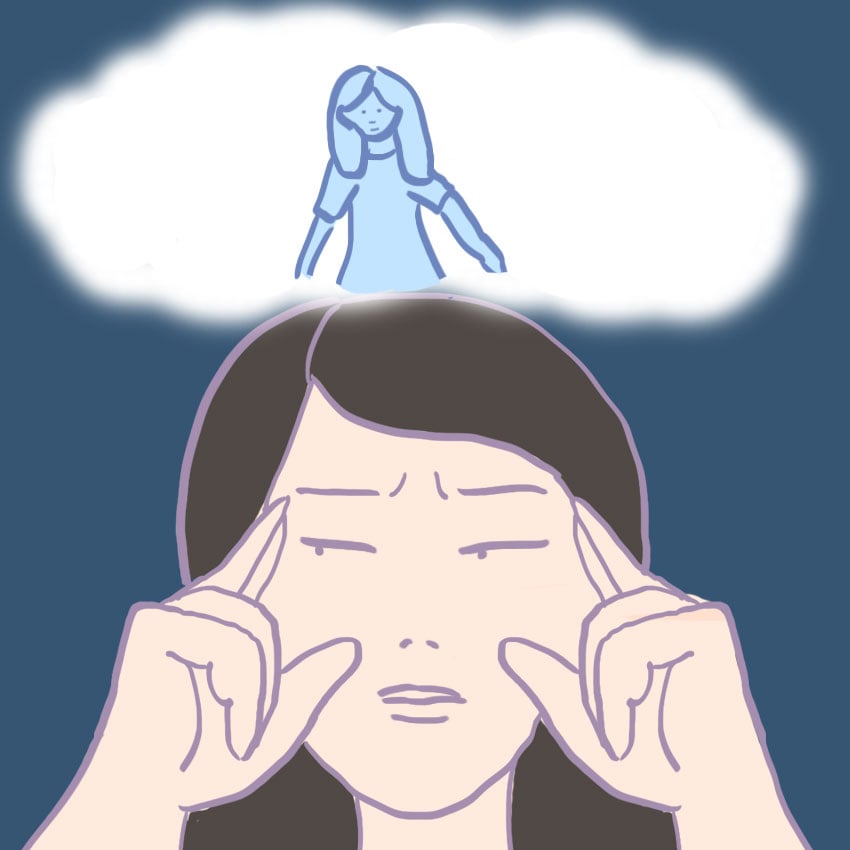Dreaming is one of those amazing things that your mind does. Dreams can be beautiful and inspiring, or they can be troubling and downright terrifying.
Either way, dreams are creations of your subconscious that reflect events of your life as well as your deeper thoughts, fears, desires, and anxieties.
One thing both dreams and nightmares have in common is that for the most part, they just sort of happen.
You don't have much control over who or what appears in them, and sometimes you even have dreams where you're simply watching yourself do something. For most people most of the time, that's how dreams work.
But not always. There's a phenomenon known as lucid dreaming where you're actually aware that you're dreaming.
This usually happens as you slowly become conscious. Usually, the realization "Oh, I'm dreaming" doesn't last long, and you wake up shortly after.
However, with some practice, you can train your brain to actually stay in the dream, and even manipulate the dream into something you want! How cool is that?
It's not something you can do immediately, but once you get the hang of it, you can start interacting with all those strange things that keep appearing in your dreams, and it even has some surprising mental health benefits.
Read on to learn how to steer your dreams tonight!
What Is A Lucid Dream?

A lucid dream is a dream in which you are aware that you're dreaming.
During lucid dreaming, you can also control the elements of the dream, including the characters, actions, and narrative.
The term "lucid dream" was first used in 1913 by Dutch psychiatrist Frederik van Eeden, but people have been fascinated by this phenomenon for centuries.
Why Is Lucid Dreaming Beneficial?

All dreaming, even nightmares, is beneficial to your brain. Lucid dreaming has the added bonus of allowing you some control.
Lucid dreaming has been shown to help people solve real-world problems by running through potential solutions in their dreams.
It can also help with recurring nightmares, as the dreamer can learn to control and diffuse the scarier aspects.
And if you can control a dream and, say, make yourself fly? Well, it's just a lot of fun!
How Can I Learn To Lucid Dream? Step #1: Prepare Before Bed

The first step for lucid dreaming is just dreaming — and remembering your dreams.
Before sleeping, tell yourself that you're going to dream and that you'll remember those dreams in the morning.
Repeat it to yourself a few times. It sounds silly, but it's actually quite effective!
Step #2: Keep A Dream Journal

A dream journal is a great way to remember your dreams more vividly.
It can also help you keep track of recurring images and themes, and may shed light on some of the issues you face in the waking world, too.
Keep it by your bedside so you can quickly jot dreams down before you forget them.
The more you record your dreams, the more easily you'll be able to recall details of your dreams, which is very important to lucid dreaming.
Step #3: Set Your Alarm Early

Waking up slightly earlier than normal will also help you remember your dreams more clearly.
It will also give you some time in the morning to remember your dreams instead of simply rushing out of bed and into your day.
Step #4: Learn To Realize When You're Dreaming

When we're dreaming, we often don't realize it. In a dream, a classroom full of giant flamingos might seem totally normal!
However, you can train your mind to be aware of strange things, and recognize them as signals that you are, in fact, dreaming.
Look out for physically impossible things, like flying, breathing underwater, or clocks with strange numbers.
Once you're aware you're dreaming, your conscious mind might be able to control the circumstances of your dreams.
Step #5: Do Reality Checks

While you're awake, create a habit that tells you that what you're experiencing is, in fact, real. Common habits include looking at your hands or pinching yourself.
Doing this during the day will make it easier for you to do it in a dream, because your mind will be in the habit of questioning whether you're awake, and it will make it easier to be aware of dreaming.
Step #6: Practice, Practice, Practice!

You're not going to be able to live out a perfect dream fantasy on your first try.
Yes, we'd all like to defeat invaders from distant planets on a rainbow unicorn, but be patient.
Your first attempts at lucid dreaming might see you knowing you're dreaming but unable to change anything, or only able to control a few things with great effort.
That's OK! Just keep trying.
Step #7: Try A Vitamin

If you have trouble sleeping, or getting to the sleep level required for dreaming, try a vitamin or supplement.
Vitamin B6 is good for encouraging sleep, and you can talk to a doctor about other supplements that will help you get to sleep faster and stay asleep.
Step #8: Recollect

Because you've set your alarm a little early, you'll have time in the morning to go over the details of your dream.
When you wake up, stay in bed a minute and try to remember everything you can about your dreams — then write them in your dream journal.
Then, go about your day. You might find that your dreams have given you a new outlook on waking life!
Now that you know the steps, try this tonight! Even if you don't get it right away, you just might learn something interesting from your dreams.
And if you've ever had a lucid dream, let us know about it in the comments!
And be sure to SHARE these tips for lucid dreaming with your friends, and see if you can dream about one another!




